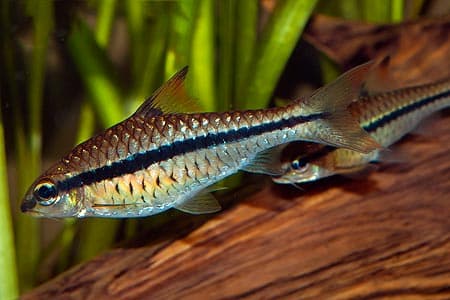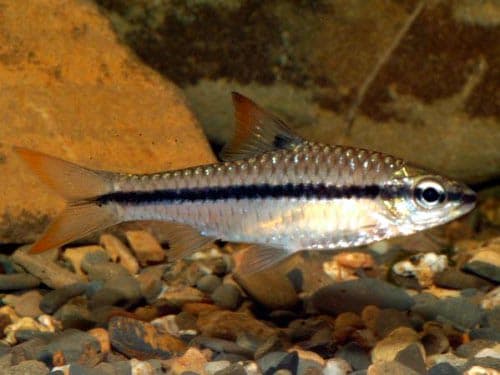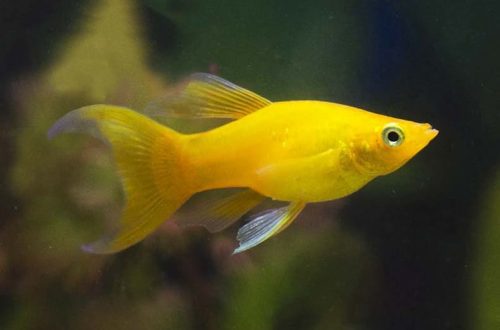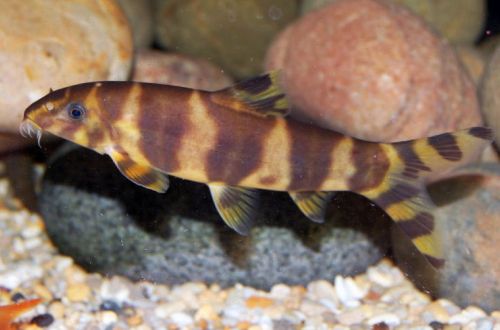
Barbus long-striped
The long-striped barb, scientific name Enteromius holataenia, belongs to the family Cyprinidae (cyprinidae). A mobile peaceful fish, unpretentious and easy to keep. Will not cause trouble even for novice aquarists.

Contents
Habitat
It comes from Central and Western Africa from the Congo Basin. The habitat covers various biotopes, from fast streams to swampy backwaters. Schools of these fish are usually found in small tributaries and much less often in the main riverbed.
Brief information:
- The volume of the aquarium – from 250 liters.
- Temperature – 24-30°C
- Value pH — 6.0–7.0
- Water hardness – 2–10 GH
- Substrate type – any dark
- Lighting – any
- Brackish water – no
- Water movement is weak
- The size of the fish is 10–12 cm.
- Food – any food, preferably live or frozen
- Temperament – peaceful
- Keeping in a group of 8-10 individuals
Description

Adult individuals reach a length of about 10-12 cm. The color is silver, a wide dark stripe runs along the body from head to tail. The tail and dorsal fins are reddish in color. Sexual dimorphism is weakly expressed. Males are somewhat smaller, which is especially noticeable during the spawning period, when the abdomen of females swells from caviar.
Food
The basis of the diet should be live or frozen products from bloodworms, brine shrimp, etc. Feeding exclusively dry foods (flakes, granules) can lead to digestive problems, so they are used as a supplement to diversify the diet and become a source of essential vitamins and minerals. trace elements.
Maintenance and care, arrangement of the aquarium
The optimal size of the aquarium for a small flock of long-striped barbs starts from 250 liters. The design is arbitrary, provided that there are enough free areas of open water for swimming.

They are considered simple in content, since they do not require the creation of specific conditions. Maintenance of the aquarium consists of several standard procedures: weekly replacement of part of the water with fresh water, cleaning of organic waste (food residues, excrement), monitoring pH / GH / oxidizability parameters, as well as equipment maintenance.
Behavior and Compatibility
A peaceful schooling fish, it goes well with other species of comparable size and temperament. It is recommended to maintain the number of flocks of at least 8-10 individuals, with a smaller number they can become shy.
Breeding and reproduction
At the time of writing, there is no reliable information about the successful breeding of Barbus longstripe in a home aquarium. However, this is entirely possible as the breeding process is similar to other Barbs.
Fish diseases
In a balanced aquarium ecosystem with species-specific conditions, diseases rarely occur. Often, diseases are caused by environmental degradation, contact with sick fish, and injuries. If this could not be avoided, then more about the symptoms and methods of treatment in the section “Diseases of aquarium fish”.
Source: FishBase





